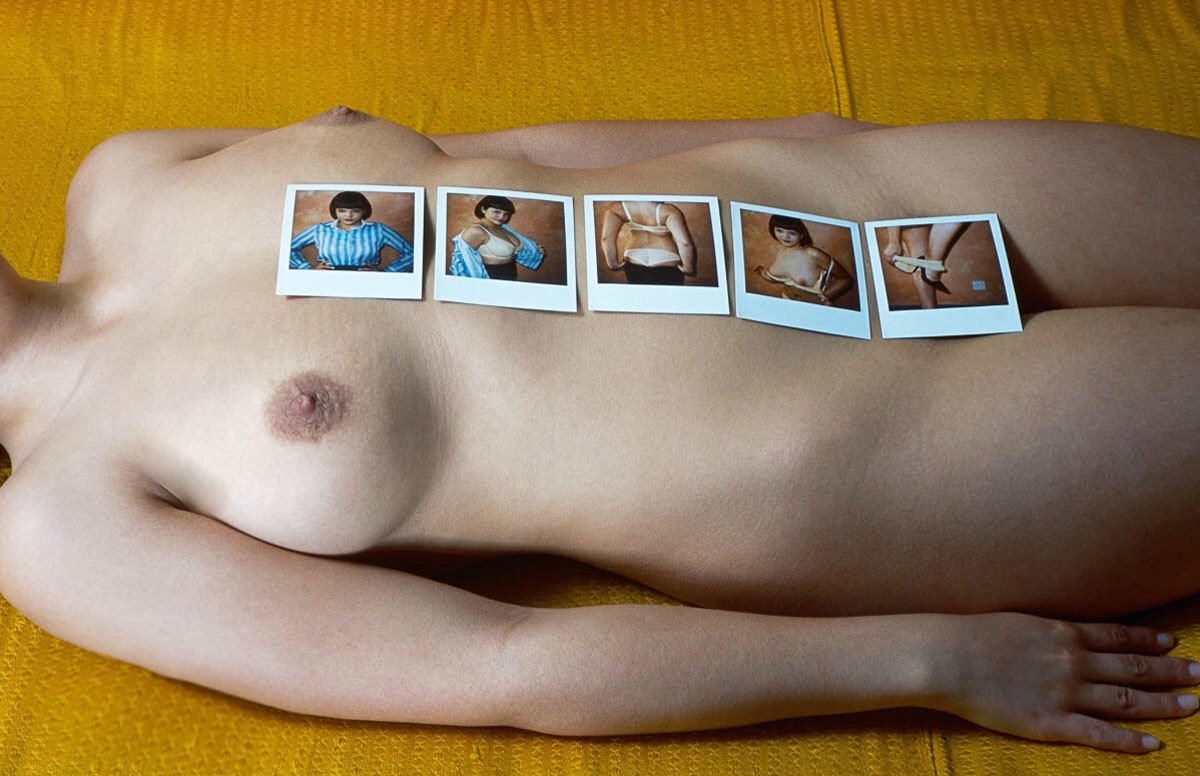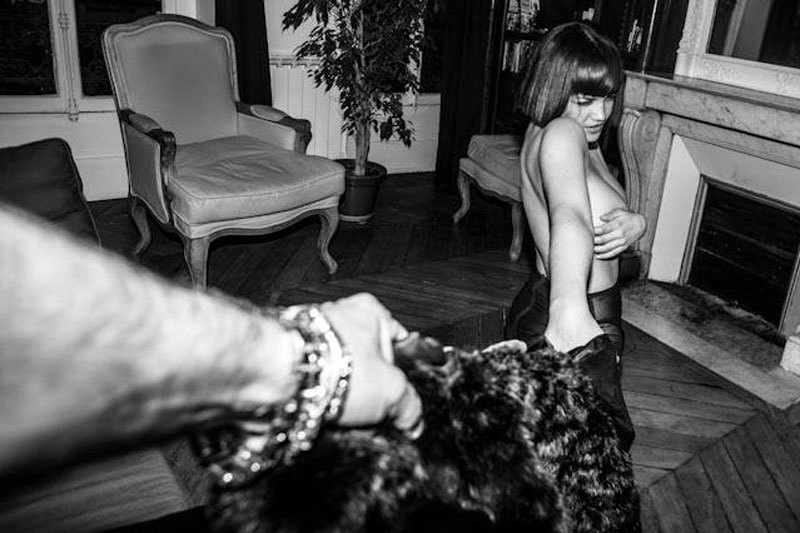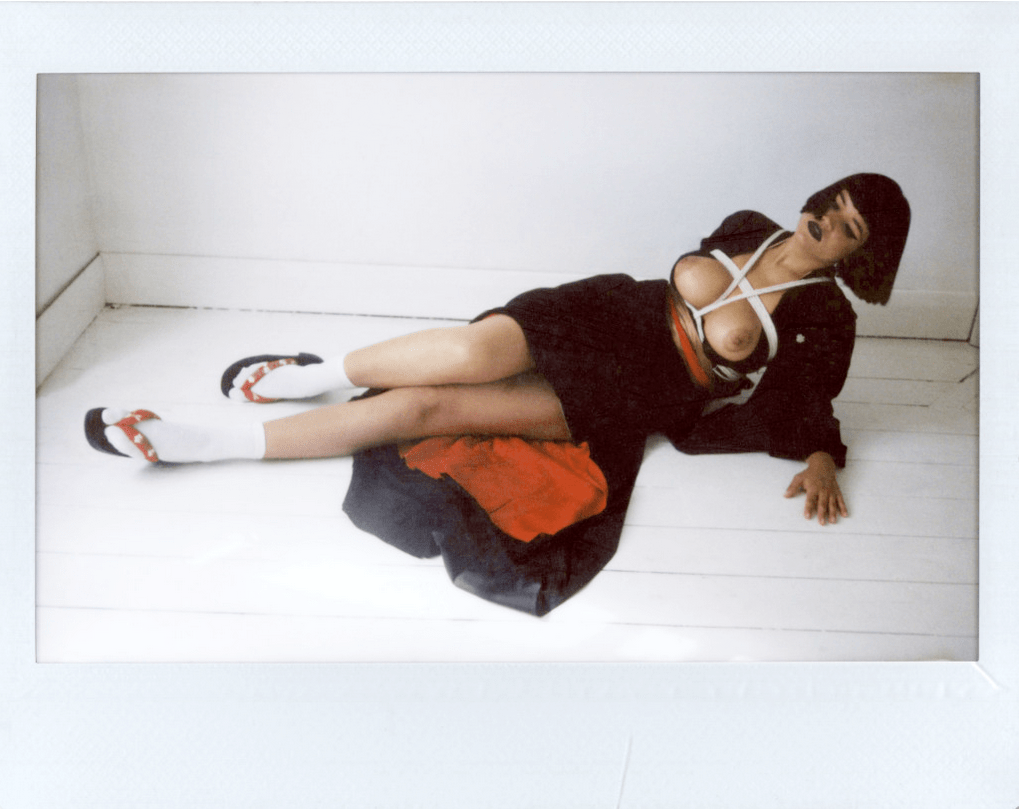Self-described as “Wednesday Addams’ Jamaican sister, with the heart of Jean Rhys and the curves of a Bellmer doll”, Tessa Kuragi isn’t like anyone we’ve ever met before. Considering herself too gothic for the sunny climes of Jamaica, Tessa moved to London to pursue a career in modeling, but being mixed race, she found she struggled to fit neatly into both “black” or “white” society. It was then she started living a life of fantasy and doing things on her own terms. Tessa, who was bullied as a kid, today oozes sex appeal from every pore. Her work spans the realms of fashion, art, and erotica and sees her playing with the allure of a femme fatale and the coquettishness of a little Lolita.
Through projects with leading photographers such as Ellen von Unwerth, Nicola Formichetti, Olivier Zahm and Nick Knight — who once suspended her in rope, surrounded her with snakes, pierced a gown to her skin with three inch nails, and stuffed her mouth full of dead birds — Tessa treads the line between sex and violence, sadism and masochism, subject and object, artistic performance and sexual fulfillment. Fresh from the release of Bruise Album — a collection of saturated, monochrome photographs that documents the bruised markings that Tessa and her partner Jon-Ross Le Haye inflict on each other’s bodies — we catch up with the Jamaican beauty to find out where female empowerment and sexual fantasy collide.

How does modeling allow you to explore your sexuality?
I was always drawn to erotic work. The photographers Alva Bernadine and Marc Blackie first caught my eye. I loved their unusual take on sexuality. It made sense to me, so I wrote to them asking to model. The first time I had ever experienced rope bondage was working with Marc Blackie. It was wonderfully cathartic but also awkward as it was a photoshoot with professional boundaries. I like treading this line between allowing myself to be sexual and vulnerable showing the photographer and audience that part of me, but keeping within the boundary of it being a shoot and not a relationship with a lover.
Did the idea of being different to what society considers “normal” ever scare you?
Normality scares me! When I think of what “normal” means I think of someone that has given up in life, herd mentality, “middle of the road”, lack of imagination, lack of dreaming, grey monotone washed out slabs and JEANS! That said, I know that these strong feelings also come from rejecting a world that rejected me and I know that you can be perfectly happy living a “normal” life. I do think however that the world would be better off without prejudice against what is not seen to be “normal.” We need to lose the stigmatizing and pathologizing of extremes of normal experience whether in terms of sexuality, mental health, or simply the rules about how to live your life, how to dress, what is “appropriate” to wear, say or do, because these things are fluid anyway.
What is the biggest misconception about BDSM culture?
I think many people think it is pathological and that those that engage with it are outcasts from society. While I agree that it can be pathological if, for instance, you use it to repeat past negative relationship patterns (though that can happen in non-BDSM relationships too), I also believe that it can work wonderfully in a loving relationship and that its origins make perfect sense. I also think the outcast thing is fabrication — you only have to go to a fetish party to meet people from all walks of life: lawyers, dentists, mothers, artists, so many different ethnicities. And I am not endorsing that Fifty Shades of Grey book but the very fact that it is one of the biggest selling books of all time has to tell you something about people’s interest in BDSM. It’s like sex in general: though we all enjoy it, we are afraid to talk about it.

How do you reconcile the idea of being rendered a sexual object and being empowered at the same time?
I think it’s something to do with love and sacrifice: trusting someone enough that your bond empowers you to sacrifice your power for both your pleasures. It’s maybe similar to the self-flagellation of monks — that kind of sacrifice as proof of your devotion. Don’t get me wrong though, it’s also about ensuring you get your rocks off. In many cases it is actually the submissive partner that controls the dominant, by getting them to do what they want sexually. Power shifts a lot in the relationship and can often lie somewhere different to where it appears to be.
What does feminism mean to you?
I believe in men and women being given equal rights and opportunities. That goes both ways, so women being paid the same as their male counterparts, and equally, men being allowed to be sensitive without expectations that they have to live up to macho gender roles.
Your Instagram account was recently deleted. How do you feel about female censorship on social media?
I personally don’t get what the big deal is about the naked body. Why is the painting The Origin of the World is OK to look at, but a real life vagina isn’t? I don’t understand how graphic imagery of violence and dead bodies is OK, but an art nude is seemingly the most offensive thing ever.
What’s the story behind the Bruise Album?
I created the Bruise Album with my partner Jon-Ross Le Haye. We found a Victorian album with a beautiful leather bind and pastoral scenes above the frames. I had already been taking photos of the bruises we gave each other – something I have always done as a way to keep these emblems of our love and trust, and thought about documenting these in a unique way.
What are your hopes and dreams?
To continue to create as a form of catharsis but also as a way of producing something that is hopefully aesthetically pleasing and meaningful. To inspire others to not feel worried about being “abnormal.”
